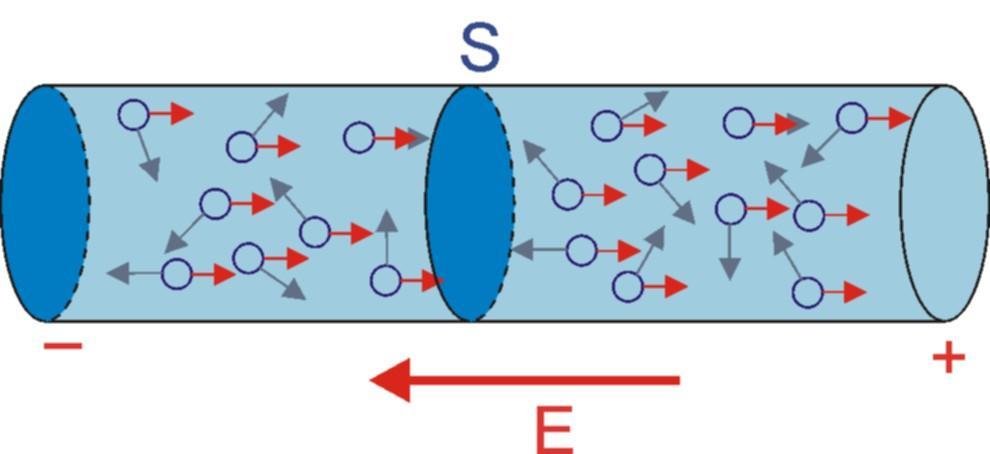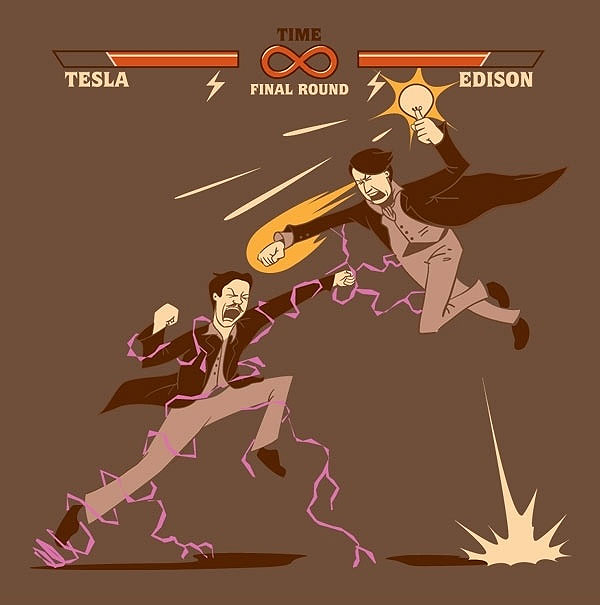Current is a term closely tied with our trade. It would be difficult to become an expert in the field of batteries, not knowing what they’re based on. Electric current is essential not only for us, but for everyone at every step. Whether you’re charging your phone, watching television, or riding the tram to work, it’s always there. The phenomenon, which to us is as natural as air, is not that easy to explain. Not many really know, what current is and how it works. When asked, some will mention AC and DC without much conviction (and we’re not talking about the legendary Australian band), others will shrug helplessly. This is why it’s worthwhile to briefly and clearly answer: what is current?
The history of current
Since the ancient times people have been aware of a certain phenomenon which we now call electricity. They could not yet explain it at the time, but they have observed that rubbing amber causes it to attract dust particles. They were aware that SOMETHING was happening. However, electricity fell into obscurity in the “dark ages”, and only by the end of the 17th century William Gilbert discovered there to be several other materials with similar properties to ancient amber. And this is where the phenomenon of electricity got his name (from Greek: elektron – amber). On that foundation, scholar Stephen Gray divided materials into those which conduct current (conductors), and those without such properties (insulators). Through this, he discovered that electricity, or more commonly – current – can be transmitted over distances using metals or damp materials, and that’s the discovery that started it all. Subsequent years were marked in development and thorough study of electricity by figures such as: Benjamin Franklin (discovery that an electric charge can be positive and negative), Alessandro Volta (creation of the first capacitor), Charles Coulomb (theory on the interaction of stationary charges), Georg Ohm (relation between voltage and amperage), Michael Faraday (the first electric motor), Gustav Kirchhoff (the law of current conservation in circuits), or Andre Ampere (interaction of charges in motion). Do these names sound familiar? They should, because they certainly occur quite often in physics class.
Physics on current
Knowing the historical background, we can delve slightly deeper into the secrets of current from a physical perspective. This is not the simplest issue, so I’ll try to present it in the most accessible manner I can. Current is the ordered motion of electric charges. That’s the basic definition. Somewhat understandable, but doesn’t say a lot. Let’s try to figure it out piece by piece.

- Electric charge – i.e. particles which can create an electric field. As Benjamin Franklin proved, a charge can either be positive or negative. The current flows in the direction determined by positive charges.
- Motion– as you may know, at least if you haven’t been skipping on many classes, all particles in the universe are in constant motion. It doesn’t matter if they are charged or not. This motion is chaotic and in no way creates a current. The magic happens, when a magnetic field is applied. The charged particles begin to move in an ordered manner, and their movement creates what we are getting to, which is CURRENT.
- Electric field – this is a very complex term, but for our discussion let’s stick to the definition of it being a certain property of space, which causes interactions between charges.
It should be noted that this is a very cursory presentation of the process which is the generation of current, however, I hope it will inspire you to do your own research and expand your knowledge further.
What is current in practice?
Soon after theoretical and experimental discoveries related to electricity, it started being applied in practice. The first of many breakthrough inventions was the telegraph, created by Samuel Morse, which made long distance communication drastically easier. Then there were devices like the phone, radio, or the lightbulb. In order, however, for these inventions to work and be useful to society, it was necessary to get electricity to people’s households. This is where the turbulent rivalry between Thomas Edison and Nikola Tesla begins.

First, in 1882 Thomas Edison launched the first electrical network, which provided electricity to several dozen inhabitants of Manhattan. This was the direct current (DC). In 1894, he hired an employee, a genius with a different vision from his employer. Nikola Tesla, for that was the employee, proposed the application of an alternating current (AC), which improved the efficiency of transformers. This did not sit well with Edison, and from that point on they became mortal enemies. While surely both wished painful death upon the other from shock by their own type of current, they both survived, and in 1897 Tesla began distribution of alternating current. Finally, after years of fighting and mutual slander, the battle was won by Tesla with his alternating current, which found broader application. This is the current that now flows in our sockets and allows us to power our computers, telephones, and servers, allowing you to read this text. It is worth mentioning that Tesla’s success was only ideological, as he was later forced to sell his patent, on which Edison’s company made its commercial success. Well, the battle never really concluded, and both are simultaneously losers, and winners.
Summary
Our quick journey through the history of electricity is at an end. It shows us, how an idea supported by the work and talent of many people can transform into something, without which we could not function today. I personally believe that there are still many such ideas and discoveries ahead of us, which we are not yet even aware of, and decades into the future won’t imagine living without. For those interested in the subject, I can recommend the book “The Last Days of Night” by Graham Moore. It tackles the detailed history of electricity, as well as expands on the origin and course of the rivalry between Edison and Tesla. It’s a very interesting read, well worth becoming acquainted with! It’s a topic that’s also loosely referenced by the film “The Prestige” directed by Christopher Noland, which I also sincerely recommend.

If you have any questions or remarks, please let us know in the comments!
Alexandra Smith
Related posts
Most viewed entries
- Electricity in a camper van on holiday – a conundrum easily solve
- Off-grid installation on a plot. Is it worth it?
- Charging your electric car at home without a wallbox
- Inverter – what it is and what it is used for
- Zero VAT on energy storage in the UK possible soon
- Greece sets aside €200 million for photovoltaic subsidies!

